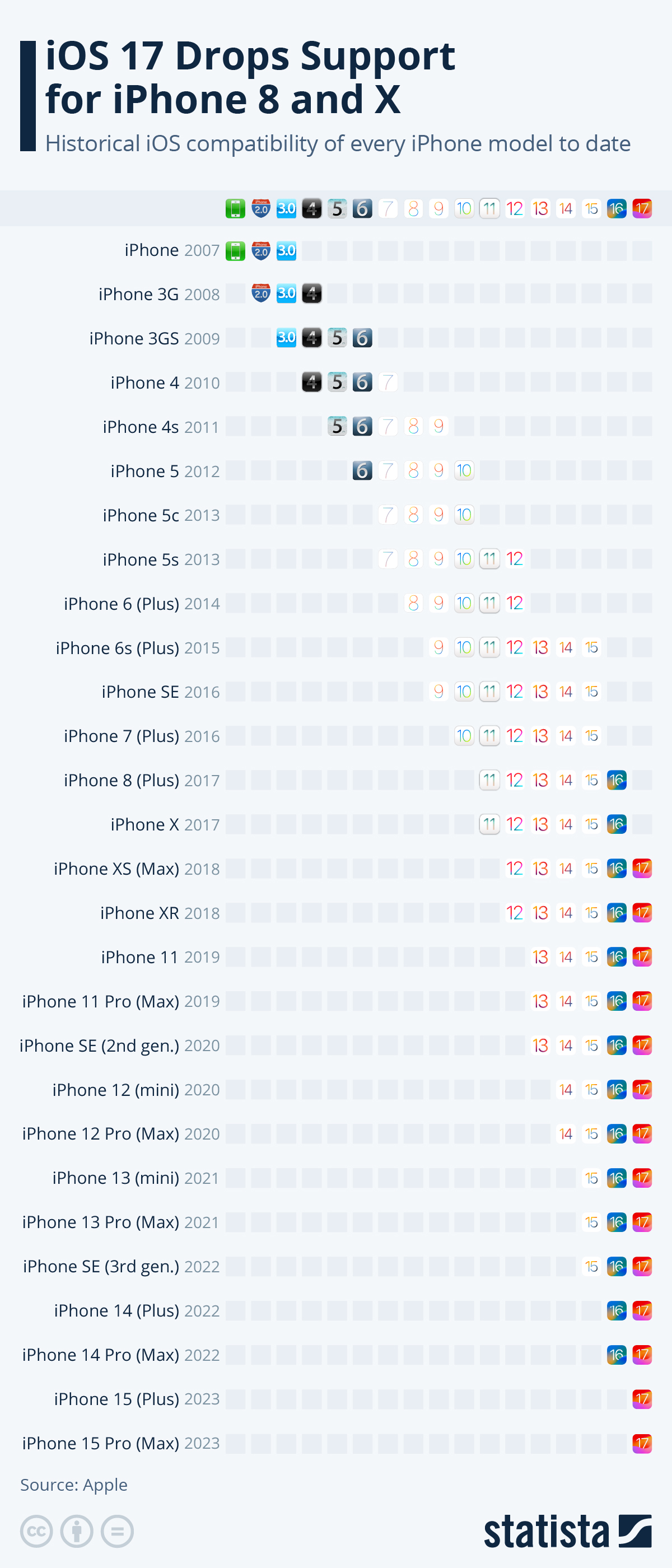Aside from introducing updates to its Apple Watch and iPad line-up, Apple also announced the imminent release of iOS 14 at its special event in September. The latest edition of the mobile operating system that powers the iPhone was rolled out to customers around the world on September 16th 2020, with iPadOS, watchOS and tvOS also receiving updates that week.
As the following chart shows, Apple significantly extended the life cycle of iPhone models over the years. While the original iPhone and the iPhone 3G received two major iOS updates, later models have gotten software updates for five to six years. The iPhone 6s was launched with iOS 9 in 2015 and is still compatible with this year’s iOS 14.
If they proceed with the current trend, with models stretching support for upto six years, iPhone 7 users may enjoy one last year of updates entering into 2022.


